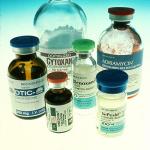As I spend more time writing about health and science articles I have been introduced to some aspects of science journalism.
Other Science News
From CAR-T cancer therapy to the power of CRISPR-Cas9, the recent advancements in gene therapy are astounding.
Good science journalism is hard to find. In a world of fake news, the public needs trusted guides to help them understand complex issues.
One of the enormous problems with electronic health records (EHR) is that it requires lots of data entry. When physicians perform this task, it takes away from valuable time and expertise that could be given over to patients not screens. [1]
From a young age, we teach science to students all wrong.
Here’s a novel approach, appreciate and value the physicians in actual practice and watch job satisfaction soar.
A United flight (UA-31) bound for Newark (New Jersey) from Munich (Germany) was safely diverted to London Heathrow Airport after multiple passengers complained of feeling lightheaded and unwell.
As if fighting in the Vietnam War was not awful enough on its own, veterans are now finding out they could be at increased risk of a deadly form of cancer.
Here is an old ethical problem, redressed in its new and future framing.
As if having cancer were not enough to worry about, people undergoing chemotherapy need to keep bacterial infections in the forefront of their concerns at all times.











